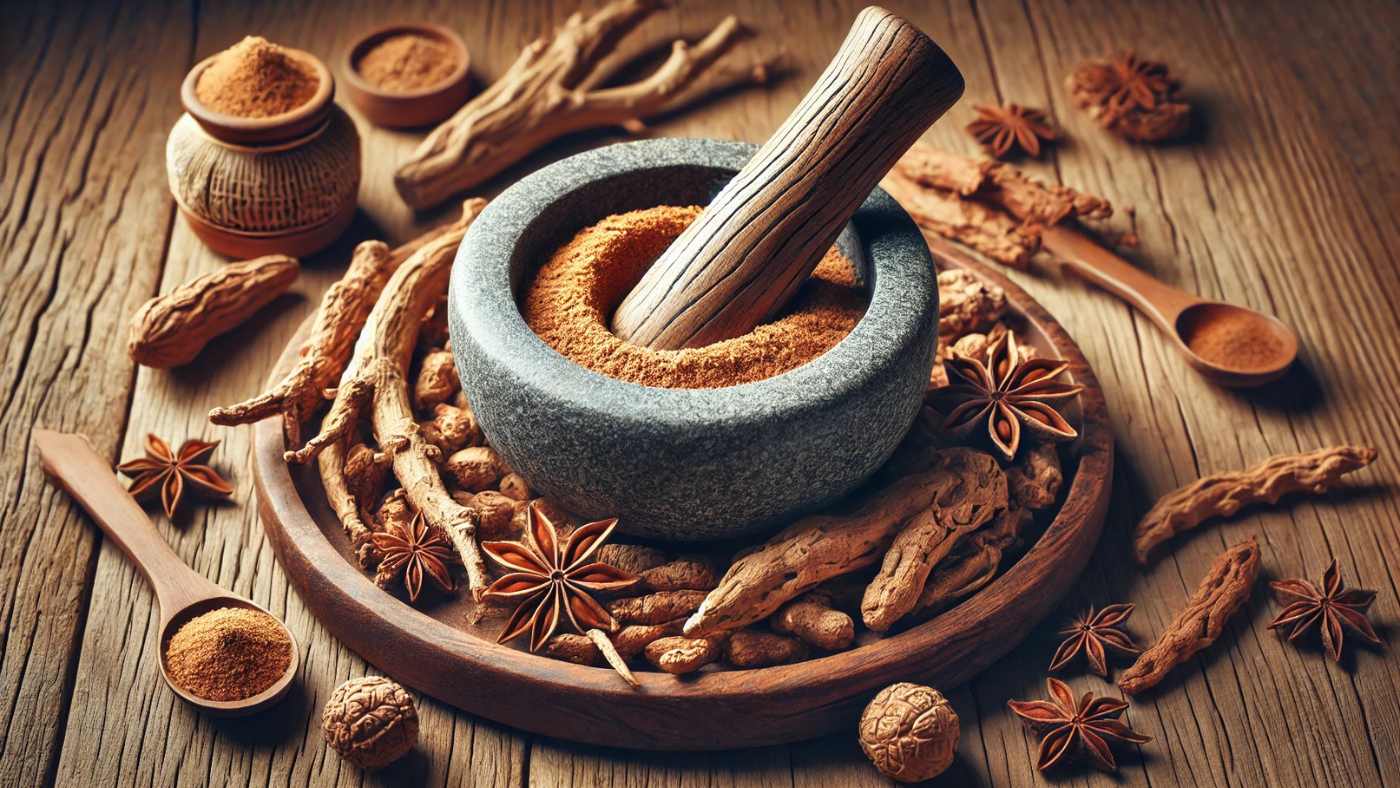How to Make Ashwagandha Powder at Home: A Simple Guide

People have used Ashwagandha as Indian ginseng to support good health for a long time.
The plant's adaptogenic quality assists the body by controlling stress, then returning it to regular operation.
You can prepare your own ashwagandha powder within your home environment.
When you make your own ashwagandha powder you can produce a product of better quality because it does not contain added substances found in market versions.
Making your own ashwagandha powder lets you achieve better health through a simple natural process.
This guide will show you how to prepare Ashwagandha powder in your home environment, including root selection and daily usage methods.
Let’s dive in!
What is Ashwagandha?
For hundreds of years, Ayurvedic medicine has used Ashwagandha to treat patients.
India and North Africa are the natural origins of this herb, which helps the body resist stress better.
Ashwagandha functions as an adaptogen by managing cortisol hormone production when your body faces stress (1).
The herb Ashwagandha demonstrates its capacity to reduce stress but also interacts positively with energy levels sleep quality and brain health.
People use the dried Ashwagandha root mainly due to its medicinal characteristics.
Benefits of Ashwagandha Powder
Various studies show that the medicinal properties of Ashwagandha powder offer many advantages to users.
People have used Ashwagandha for many years to maintain physical health while improving their minds and feelings.
Read these main advantages that explain Ashwagandha powder's value.
People most often use Ashwagandha powder because it helps them feel less anxious and stressed. Research proves Ashwagandha powder cuts down cortisol levels to produce peaceful relaxation (2).
Research shows that taking this powder boosts mental capacities including memorization power and mind focus (3).
The ashwagandha powder strengthens your immune system and raises your energy levels (4). You can get more energy through Ashwagandha treatment rather than turning to caffeinated products which cause sudden energy loss.
The natural supplement ashwagandha powder helps men increase their testosterone levels and supports better reproductive wellness.
The supplement regulates hormonal balance in both thyroid and adrenal glands, which benefits people with different gland conditions.
Why Make Ashwagandha Powder at Home?
You gain better control over your Ashwagandha root quality when you prepare it at home instead of buying it ready-made.
When you prepare your own Ashwagandha root powder, you have complete authority to determine its quality.
You can acquire superior quality roots by planting your own Ashwagandha since no harmful pesticides or chemicals will touch them during production.
You can create pure ashwagandha powder at home because commercial powders usually have added preservatives and fillers.
The fresh Ashwagandha powder you make at home contains higher strength benefits so you get complete advantages with every dose.
The process of creating your own ashwagandha powder becomes a great self-reward.
Creating your own powder helps you experience natural wellness techniques while living sustainably as a self-reliant person.

How to Make Ashwagandha Powder at Home
Creating ashwagandha powder at home follows basic steps that anyone can follow.
You require basic ingredients and tools, together with time to make your own ashwagandha powder.
Follow these instructions to prepare ashwagandha root powder from your own supplies.
Ingredients You’ll Need:
- Acquire fresh or dried Ashwagandha roots from certified organic suppliers.
- You require either a mortar and pestle or a grinding tool to transform the roots into powder.
- Water for cleaning the roots.
Step-by-Step Process:
- To prepare your ashwagandha powder, use freshly picked or purchased ashwagandha roots.
- Begin by finding trusted sources of Ashwagandha roots that are ready for use.
- You can start your own Ashwagandha plants when you possess a garden space.
- Buying fresh or dried roots from dependable suppliers will supply your needs.
- Choose organic suppliers to prevent taking in dangerous chemicals.
Clean the Roots Thoroughly:
- Start your grinding process only after you clean the roots effectively.
- Wash the Ashwagandha roots with cold water to remove all external contaminants.
- Use a towel or natural drying to remove moisture from the cleaned roots.
Dry the roots (if fresh):
- Drying fresh roots is necessary before starting to grind them.
- Position dried Ashwagandha roots in a dry and warm room to let them dehydrate naturally over a few days.
- You can choose a food dehydrator or set your oven to low heat to dry the roots quickly.
- Our drying goal aims to scrub all moisture from the roots to block mold growth and make the powder durable.
Grind the roots into powder:
- When the roots are thoroughly dried, you should process them into powder.
- When you have a mortar and pestle at hand, it becomes a traditional way to grind dried roots into a smooth powder.
- You can use electrical kitchen tools like a grinder or blender to produce ashwagandha powder.
- Make sure to prepare the powder in a smooth and uniform form.
Store the Ashwagandha Powder:
- Once you grind the plant material, I put it into a sealed container to keep its strength intact.
- Keep the container in a shady spot that remains cold with minimal exposure to heat and moisture.
- The right storage of ashwagandha powder keeps it effective for approximately six months.

How to Use Ashwagandha Powder
After preparing your own ashwagandha powder, we will discuss its effective use.
You can use Ashwagandha powder by following these different approaches:
Ashwagandha powder becomes most convenient to take when you blend it into hot water. Begin with half a teaspoon of powder and enhance your intake slowly when needed.
When people enhance the absorption of ashwagandha they mix it with warm milk. The fat in milk boosts how well the active components of Ashwagandha enter the body.
Make Ashwagandha tea by adding powder into hot water then include your preferred herbs and sweeteners. It serves as an effective method to relax after work.
Precautions and Dosage of Ashwagandha Powder
Using ashwagandha powder in limited amounts has positive effects.
People usually take 1/2 teaspoon to 1 teaspoon of Ashwagandha powder daily as their recommended serving.
How Ashwagandha Powder Compares to Other Forms of Ashwagandha
You can find Ashwagandha in capsule form or extract format, as well as in powder supplements.
Every format of Ashwagandha has distinctive advantages and needs special attention.
Customers can choose their preferred use amount when they buy powder because of its flexible product design. People wanting pure supplemental support will find this product ideal for their needs.
Capsules make travel easy, but come with unnecessary additives due to packaging requirements.
Ashwagandha extracts provide powerful results quickly, yet can have a stronger taste or use synthetic ingredients.
You can easily create the right dosage of pure ashwagandha powder to meet your needs.
To Wrap It Up
Preparing your own ashwagandha powder brings you immense benefits through a basic making process.
Using your own hands to make ashwagandha lets you choose its best quality and connects you naturally to your healing path.
People should take Ashwagandha daily because its health benefits support their mental well-being while improving their physical fitness and hormone balance.
Starting your own ashwagandha powder production at home will help you better manage your health.
You can find top-quality Ashwagandha from Wild Foods because their powder makes it easy to use.
The health benefits you will get from pure, sustainably sourced Ashwagandha will improve your well-being.
🌿 Discover the power of pure Ashwagandha with KSM 66 – your natural solution for relaxation and energy. Order now! ✨
FAQs on How to Make Ashwagandha Powder at Home: A Simple Guide
What steps do I need to follow to make ashwagandha powder at home?
Rinse Ashwagandha roots before making them dry and turning them into a smooth powder. Keep the processed powder sealed inside a container.
Are fresh ashwagandha roots suitable for powder production?
Fresh roots need drying before getting ground into a usable powder. Dry your Ashwagandha powder completely to stop mold from developing.
What method should someone use to take Ashwagandha powder to reduce stress?
Mix ashwagandha powder with warm water or milk. Take a minor amount at first and adjust your dose up carefully.
Home-made Ashwagandha powder retains its freshness for about six months when properly stored.
You can keep freshly sealed Ashwagandha powder effective for six months under proper storage methods.
Related Studies
1. Title: Adaptogenic and Anxiolytic Effects of Ashwagandha Root Extract in Healthy Adults
A double-blind, placebo-controlled study found that Ashwagandha root extract (250 mg/day and 600 mg/day) significantly reduced serum cortisol levels (P < 0.05 and P < 0.0001, respectively) in stressed adults over eight weeks.
Link: https://pmc.ncbi.nlm.nih.gov/articles/PMC6979308/
2. Title: A Prospective, Randomized Double-Blind, Placebo-Controlled Study of Ashwagandha Root Extract in Reducing Stress and Anxiety
High-concentration Ashwagandha root extract reduced stress-assessment scores (P < 0.0001) and serum cortisol (P = 0.0006) in adults after 60 days, with no severe adverse effects.
Link: https://pmc.ncbi.nlm.nih.gov/articles/PMC3573577/
3. Title: Efficacy and Safety of Ashwagandha Root Extract in Improving Memory and Cognitive Functions
An eight-week RCT showed Ashwagandha (300 mg twice daily) improved memory, executive function, and attention in adults with mild cognitive impairment (P ≤ 0.042).
Link: https://pubmed.ncbi.nlm.nih.gov/28471731/
4. Title: Ashwagandha Extract Shows Immune-Stimulatory Properties
A low-dose Ashwagandha extract (60 mg) enhanced innate and adaptive immune markers in healthy subjects, supporting its traditional use as a rejuvenating herb.
Link: https://www.nutraingredients-usa.com/Article/2021/09/13/Ashwagandha-extract-shows-potent-immune-stimulatory-properties-Study
